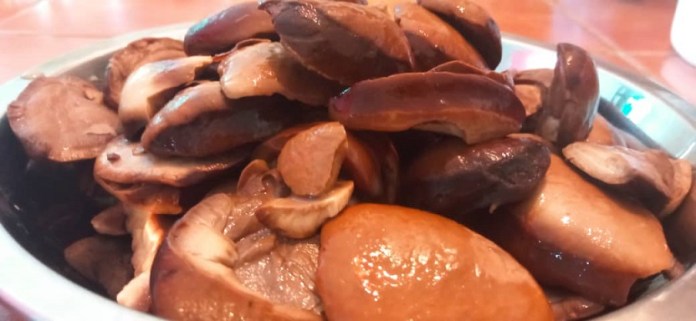
By Wilfred Pilo
KUCHING, Feb 3: “Sayang sayang buah kepayang, dimakan mabuk, di buang sayang” literally means, if the kepayang fruit is not eaten, it would be a waste, if consumed, it could be poison.
It is a well-known rhyme surrounding one of our favourite local fruits, the buah kepayang or “football fruit”.
Despite the somewhat alarming message of the rhyme, it is still a savoury grub for many locals who have a palate for it, once it is properly prepared that is.
The fruit is known to contain hydrogen cyanide, a deadly poison if consumed raw, though it is easily washed away once it is boiled and prepared properly.
This fruit, or rather the fleshy part (cotyledon) of the seed or pod, is the part of the fruit that is consumed once it is turned into a savoury dish.

The locals like the fruit as the texture of the cotyledon is described as creamy, nutty, bitter and crunchy which goes well when mixed with local vegetables.
Some natives used the properly processed cotyledon of the fruit as an ingredient for fish and meat fermentation. The leaves are also useful and used as a natural wrapper.
If you harvest the fresh fruit (which is shaped like a rugby ball) from the tree, then a cleansing process is needed to get rid of toxic substances.
First, one needs to cut open the rugby-shaped fruit to get the seed or the pod. The seed is then boiled for more than 40 minutes to an hour or slight more.
Then, the seed is cracked open, and the fleshy part of the seed is soaked between two to three days or longer before it can be consumed. The cotyledon is commonly seen for sale at markets throughout Sarawak.
At a farmer’s market, local vendors sell the fleshy part by the packet at about RM6, and the price varies on supply and demand. — DayakDaily








